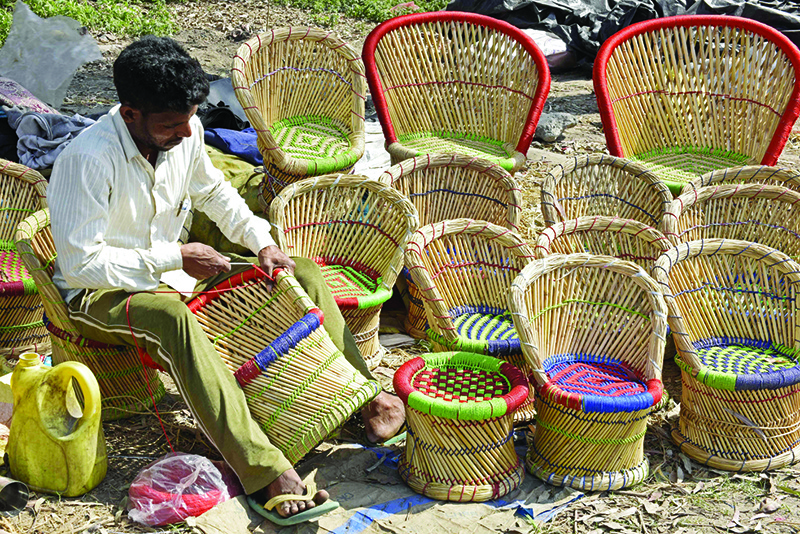NEW DELHI: India’s economy grew 0.4 percent year-on-year in the final quarter of 2020, official data showed Friday, ending its first recession since independence as easing coronavirus restrictions sparked a modest recovery. The country has struggled to claw back lost ground after a stringent, months-long lockdown caused the labor market to collapse and the economy to contract by nearly a quarter between April and June.
India entered a "technical recession” last year for the first time since gaining independence in 1947 after registering two successive quarters of contraction. The government now estimates annual GDP will fall eight percent in 2020-21. The latest figures, which fell shy of the expectations of a Bloomberg survey of economists pegging growth at 0.5 percent, will nonetheless bring some cheer to Prime Minister Narendra Modi’s beleaguered government.
Key sectors such as construction and manufacturing showed an improvement compared to the same quarter last year, Friday’s data revealed. And in January, car sales in the bellwether automobile sector increased by more than 11 percent compared to a year earlier, according to industry figures. Restrictions have been relaxed as coronavirus infections have slowed in the country of 1.3 billion in recent weeks, allowing economic activity to resume.
But the government still faces the tough task of creating enough jobs for India’s overwhelmingly young population, as millions of migrant workers make their way back to cities, reversing a massive exodus sparked by the lockdown.
"We can’t say we are completely out of the woods,” Mumbai-based economist Ashutosh Datar told AFP. "The real test would be what happens next financial year. Today’s number is not a major surprise.” The government has forecast economic growth of 11 percent in the 2021-22 financial year, in line with the International Monetary Fund’s prediction of 11.5 percent. — AFP
But experts have warned that India, whose tally of 11.1 million infections is second only to the United States, could experience another wave and be hit by new variants of the virus, as has happened in Brazil, Britain and South Africa. India’s economy was in the throes of a prolonged slowdown even before the pandemic, and the hit to global activity from the virus and one of the world’s strictest lockdowns combined to deal the country a severe blow.
"The real question is if a second COVID wave happens, what will be the reaction? If it is a national lockdown like we had last March, then the effects will be just as negative,” Pronab Sen, India’s former chief statistician, told AFP. Authorities have so far imposed limited restrictions, attempting to strike a balance between keeping the economy going and targeting outbreaks in the hardest-hit regions of the country.
The financial and film capital of Mumbai ordered fresh pandemic curbs on Monday, banning religious gatherings and political rallies after infections spiked to levels last seen in October. The finance ministry said the country’s economic recovery was well underway, but warned that "India is not yet out of the danger of the pandemic”. "Social distancing continues to be the most effective tool to combat the pandemic as activity levels continue to rise in the economy,” the ministry said in a statement.
New Delhi is hoping that the economy will get a further boost from a massive vaccination drive that kicked off last month, with 12.2 million shots administered so far to health workers and other frontline staff. But the vaccine program is already behind schedule. India plans to inoculate 300 million people by July, but at the current rate, it will take several years. India will begin to vaccinate people over 60 and those over 45 with multiple medical conditions starting tomorrow. — AFP



